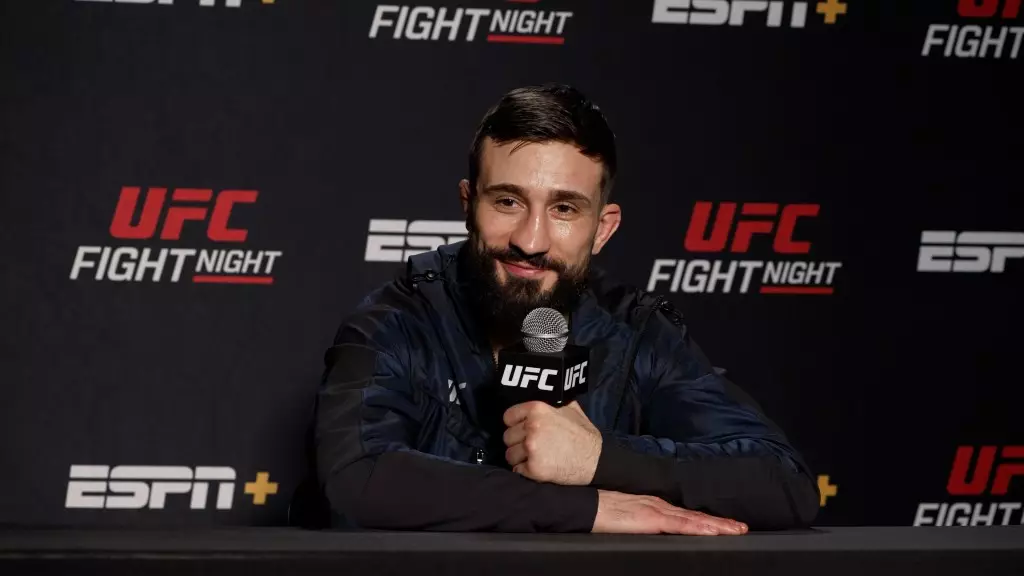At UFC Fight Night 251, a compelling bout between Nazim Sadykhov and Ismael Bonfim took an unexpected turn when the doctor intervened, halting the fight due to damage inflicted during the match. This event raised eyebrows, especially considering Sadykhov’s conviction that the stoppage was unwarranted. He emphatically dismissed suggestions that communication issues might have contributed to the doctor’s decision, maintaining that he had decisively caused damage with his striking. This incident spotlights the crucial role that perceived damage plays in mixed martial arts, an aspect often overshadowed by the technicality of scoring.
The Unified Rules of Mixed Martial Arts underscore damage as a primary measurement for successful fighting. During the bout, Sadykhov showcased remarkable striking abilities, particularly with a well-timed question mark kick that connected sharply in the first round. This move was not a blind shot; it was the culmination of meticulous preparation during his training camp, where he had focused extensively on setting up head kicks. The distinction here lies in the nature of the damage—inflicted purely through effective striking rather than incidental injuries or fouls, which underscores the emphasis placed on significant offensive output in MMA.
Sadykhov’s post-fight assessment included observations about Bonfim’s demeanor, implying that he noted a lack of will from his opponent as they prepared to commence the second round. Such psychological insights are often overlooked in the analysis of MMA fights, yet they can heavily influence the performance of athletes. Fighters frequently battle not only with their opponents but also with their own mental fortitude, and a visible lack of confidence can shift the momentum of a match. In combat sports, recognizing when an opponent has mentally faltered can serve as a strategic advantage, one that Sadykhov seemed to capitalize on effectively.
Despite the lengthy gap since his last fight in November 2023, Sadykhov’s growth as a fighter remains evident. The synthesis of various training environments—between Syndicate MMA in Las Vegas and Longo and Weidman MMA in New York—suggests a well-rounded approach to his development. Collaborating with seasoned trainers like Ray Longo and John Wood indicates a commitment to exploiting diverse fighting styles, providing Sadykhov a robust foundation to refine his skills further. Such a multifaceted training structure is vital in the ever-evolving landscape of MMA, where adaptability can be the difference between success and failure.
As Sadykhov eyes a potential return to the octagon by April, fans and analysts are eager to see how he will leverage his recent experience and insights gained from this bout. His current physical state—reportedly minor injuries to his calf and ankle—indicates he may be well-positioned to enter the cage again soon. With a desire to maintain his competitive edge and continue his journey, the question remains: what lessons will he take into his next fight, and how will he further evolve in a sport where each encounter serves as a building block in a fighter’s career? The possibilities are certainly intriguing, and the MMA community will be keenly observing his trajectory going forward.

